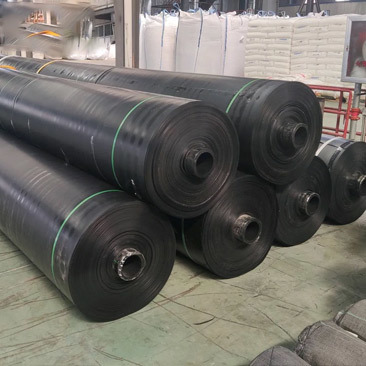Understanding Geomembrane Liners: Essential Components for Modern Construction
Release time:
2025-09-29
Geomembrane liners are a fundamental component in the construction and civil engineering sectors, particularly when it comes to earthworks, waste containment, and water management. These high-performance synthetic membranes, typically made from polymers such as polyethylene and polypropylene, serve as a barrier to prevent the migration of liquids or gases in various applications. Their versatility
Geomembrane liners are a fundamental component in the construction and civil engineering sectors, particularly when it comes to earthworks, waste containment, and water management. These high-performance synthetic membranes, typically made from polymers such as polyethylene and polypropylene, serve as a barrier to prevent the migration of liquids or gases in various applications. Their versatility and durability make them essential in various engineering projects, from landfills to water reservoirs.
One of the primary advantages of geomembrane liners is their impermeability, which helps mitigate environmental risks. In landfills, for instance, these liners protect soil and groundwater from leachate contamination, ensuring that hazardous materials do not permeate into the ecosystem. This characteristic is critical for sustainable development, as it aids in adhering to environmental regulations and protecting public health.
Moreover, geomembrane liners are also used in water applications, such as reservoirs and canals, where they prevent water loss through seepage. This function is particularly important in arid regions where water conservation is paramount. The use of geomembranes in such settings not only preserves valuable water resources but also enhances the efficiency of irrigation systems, thus contributing to agricultural productivity.
The installation of geomembrane liners is a meticulous process that requires expertise to ensure optimal performance. Proper preparation of the substrate, accurate alignment, and secure welding techniques are vital for achieving a seamless and effective installation. Advances in welding technology, such as hot wedge welding and extrusion welding, have improved the reliability and longevity of these installations, making them a preferred choice for engineers.
In addition to their practical applications, geomembrane liners are available in various thicknesses and colors, allowing for customization based on project requirements. This adaptability makes them suitable for a wide range of environments and conditions, whether it be in mining, oil and gas, or agricultural sectors.
Furthermore, the emergence of geo-synthetic materials has opened up new avenues for innovation in construction. Researchers are continuously exploring the integration of geomembrane liners with other materials to enhance their performance and sustainability. For example, the combination of geomembranes with geotextiles can provide additional filtration and drainage capabilities, thus broadening the scope of their applications.
In conclusion, geomembrane liners are vital components in modern construction and engineering practices. Their ability to provide a reliable barrier against contamination, along with their adaptability and ease of installation, makes them indispensable in various projects. Understanding the functionality and benefits of geomembrane liners empowers professionals in the construction industry to make informed decisions that contribute to environmental protection and project efficiency.
One of the primary advantages of geomembrane liners is their impermeability, which helps mitigate environmental risks. In landfills, for instance, these liners protect soil and groundwater from leachate contamination, ensuring that hazardous materials do not permeate into the ecosystem. This characteristic is critical for sustainable development, as it aids in adhering to environmental regulations and protecting public health.
Moreover, geomembrane liners are also used in water applications, such as reservoirs and canals, where they prevent water loss through seepage. This function is particularly important in arid regions where water conservation is paramount. The use of geomembranes in such settings not only preserves valuable water resources but also enhances the efficiency of irrigation systems, thus contributing to agricultural productivity.
The installation of geomembrane liners is a meticulous process that requires expertise to ensure optimal performance. Proper preparation of the substrate, accurate alignment, and secure welding techniques are vital for achieving a seamless and effective installation. Advances in welding technology, such as hot wedge welding and extrusion welding, have improved the reliability and longevity of these installations, making them a preferred choice for engineers.
In addition to their practical applications, geomembrane liners are available in various thicknesses and colors, allowing for customization based on project requirements. This adaptability makes them suitable for a wide range of environments and conditions, whether it be in mining, oil and gas, or agricultural sectors.
Furthermore, the emergence of geo-synthetic materials has opened up new avenues for innovation in construction. Researchers are continuously exploring the integration of geomembrane liners with other materials to enhance their performance and sustainability. For example, the combination of geomembranes with geotextiles can provide additional filtration and drainage capabilities, thus broadening the scope of their applications.
In conclusion, geomembrane liners are vital components in modern construction and engineering practices. Their ability to provide a reliable barrier against contamination, along with their adaptability and ease of installation, makes them indispensable in various projects. Understanding the functionality and benefits of geomembrane liners empowers professionals in the construction industry to make informed decisions that contribute to environmental protection and project efficiency.






